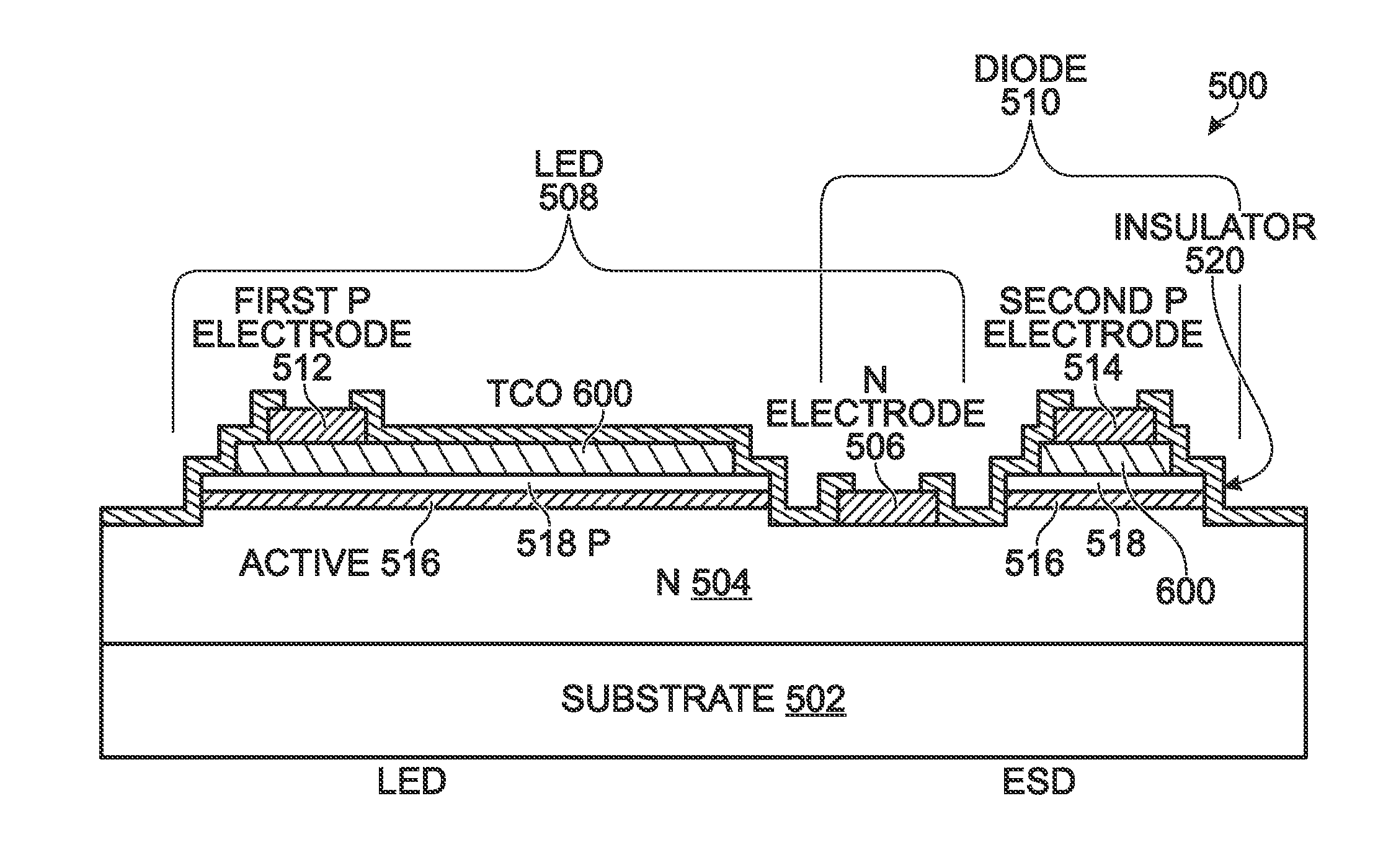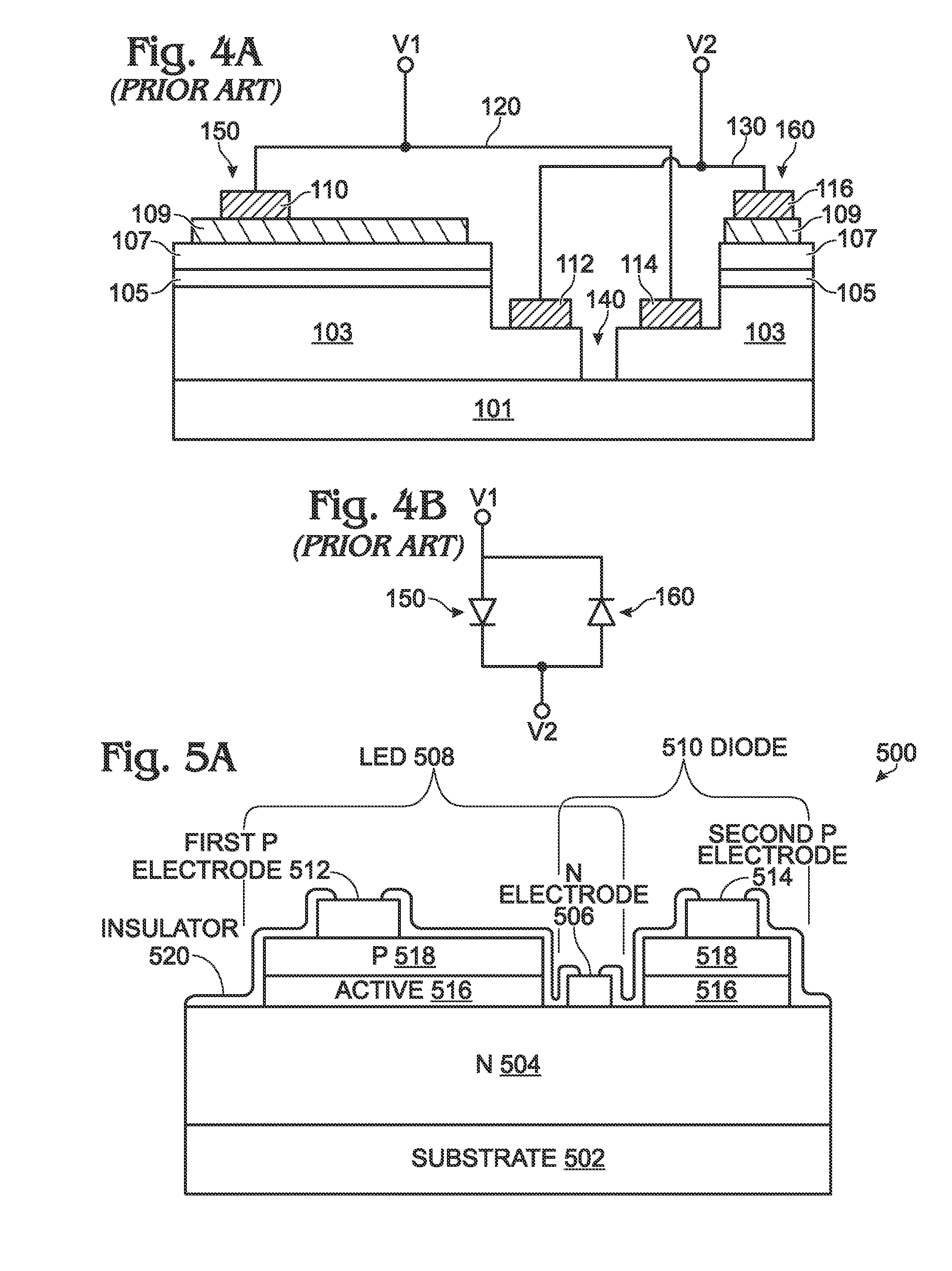Three-terminal light emitting device (LED) with built-in electrostatic discharge (ESD) protection device
a technology of protection device and led, which is applied in the direction of semiconductor devices, semiconductor/solid-state device details, electrical apparatus, etc., can solve the problems of esd, adverse effect of led performance, and uneven light generated by leds
- Summary
- Abstract
- Description
- Claims
- Application Information
AI Technical Summary
Benefits of technology
Problems solved by technology
Method used
Image
Examples
Embodiment Construction
[0022]FIGS. 5A and 5B are, respectively, a partial cross-sectional view of a three-terminal LED chip and a schematic diagram. The LED chip 500 comprises a substrate 502. The substrate 502 may be an insulating material such as quartz, glass, or sapphire, or a semi-insulating material such as silicon (Si), germanium (Ge), Group III-IV compound semiconductors, or Group II-IV compound semiconductors. An n-doped semiconductor layer (N) 504 overlies the substrate 502. An N electrode 506 overlies and is in direct contact with the n-doped semiconductor layer 504. An LED 508 overlies the n-doped semiconductor layer 504, with a first P electrode 512. A diode 510 overlies the n-doped semiconductor layer 504, with a second P electrode 514. The LED 508 and the diode 510 share the N electrode 506.
[0023]In one aspect, the LED 508 comprises an active semiconductor layer 516 overlying and in direct contact with the n-doped semiconductor layer 504. A p-doped semiconductor layer 518 overlies and is in...
PUM
 Login to View More
Login to View More Abstract
Description
Claims
Application Information
 Login to View More
Login to View More - R&D
- Intellectual Property
- Life Sciences
- Materials
- Tech Scout
- Unparalleled Data Quality
- Higher Quality Content
- 60% Fewer Hallucinations
Browse by: Latest US Patents, China's latest patents, Technical Efficacy Thesaurus, Application Domain, Technology Topic, Popular Technical Reports.
© 2025 PatSnap. All rights reserved.Legal|Privacy policy|Modern Slavery Act Transparency Statement|Sitemap|About US| Contact US: help@patsnap.com



